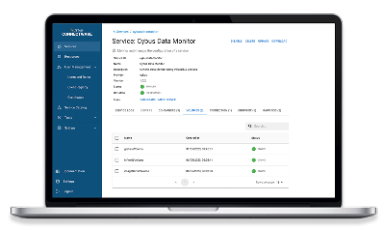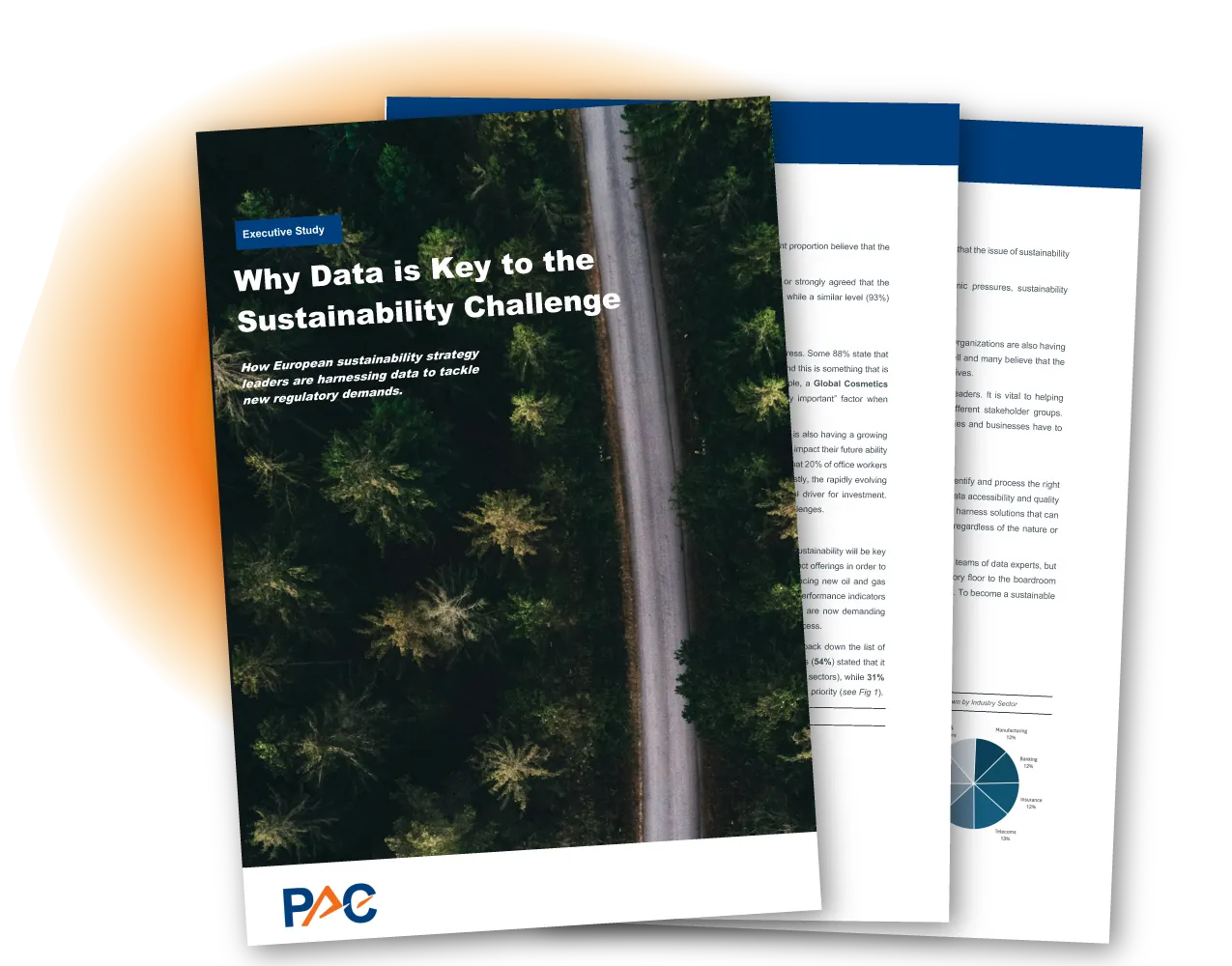InfluxDB and Connectware: Integrating Docker Containers as Connectware Services
Prerequisites
Itʼs a good idea to make yourself familiar with the following topics before commencing this lesson:
- Connectware Technical Overview
- Docker Basics
- YAML file format
- MQTT Basics
- How to connect an OPC UA server
Introduction
This lesson will focus on the concept of deploying containerised applications with a Connectware service. Step by step we will create a service commissioning file, that deploys a InfluxDB inside Connectware, configure Connectwares internal Reverse Proxy to access the containers in a secure way and to have some data we can write to our InfluxDB we will connect to a public OPC UA server and connect some endpoints. Lets get started building up the service commissioning file.
Creating the Service Commissioning File
Services are installed using a commissioning file. Within this text-based YAML file, all so-called resources like connections, endpoints, users, permissions and containerised applications a service uses are listed. Below we will derive an example service commissioning file that deploys a InfluxDB instance that we can later use to visualise our data. If any section of the service commissioning file needs clarification please feel free to visit the Connectware Docs.
Description & Metadata
These first two sections of the service commissioning file give more general information. In the optional section description you can give a short description of the service which will also be displayed in the services details view on Connectwares Admin User Interface (Admin UI). The section metadata contains the meta information for the service that is being installed. Only the name parameter is required, as it is used as the service ID other parameters as version of the service, icon for the thumbnail of the service, provider of the service or linking to a homepage are optional.
description: >
third-party Applications as Connectware Services Example
Cybus Learn - How to deploy third-party applications as Connectware Services
metadata:
name: third-party applications commissioning file
version: 1.0.1
icon: https://www.cybus.io/wp-content/uploads/2019/03/Cybus-logo-Claim-lang.svg
provider: cybus
homepage: https://www.cybus.io
Code-Sprache: YAML (yaml)Parameter
this section can configures values, that are not set during installation. It allows us to create templates from services, where just a parameter like an ip address needs to be changed. In this case we will have the host name and the port of our OPC UA server as parameters. This would allow us to quickly put in any other parameter.
#------------------------------------------------------------------------------
# PARAMETERS
#------------------------------------------------------------------------------
parameters:
opcuaHost:
type: string
description: OPC UA Host Address
default: opcuaserver.com
opcuaPort:
type: integer
description: OPC UA Host Port
default: 48010
Code-Sprache: YAML (yaml)Definitions
If we have some variables that we need more than once we can use definitions for them . We would recommend keeping them at the top of your commissioning file if you need to change them. In this case we used them to define some variables regarding InfluxDB that are needed on several occasions. The service described here is just an example in a real deployment it is recommended to secure passwords and tokens and not have them as clear text in your commissioning files.
#------------------------------------------------------------------------------
# DEFINITIONS
#------------------------------------------------------------------------------
definitions:
influxdbAdminUsername: admin
influxdbAdminPassword: supersafepassword #only for example purposes
influxdbToken: "Em2KIZ5BGJC5Y39HAmtYWqc4nyAhR4c24qt6uGlYxJ4Y1GfOZtntqs3UgH1Ea4158k6gD5UKFps8u5Kc1HvSXB1diCxcz0niJpI"
influxdbOrg: cybus
Code-Sprache: YAML (yaml)Resources
In the Resources section we declare every resource that is needed for our service. All resources like connections, endpoints, users, permissions and containerised applications are configured here.
Containers
Let’s start with the container resources, they comprise the configuration for the Docker Containers the service will deploy. These containers can either come from Docker Hub or from the Cybus Registry. That means any application that is deployed on Connectware can take full advantage of all the containerised software on Docker Hub and your custom containerised software delivered securely through the Cybus Registry. In the example below we pull the official InfluxDB from Docker Hub. Several options that can be used when configuring containers can be found in the Connectware Docs. For the container-specific environmental variables defined under the property environment, you should consult the containerʼs documentation. If you have worked with Docker-Compose before, the configuration of the container should feel familiar.
#------------------------------------------------------------------------------
# RESOURCES
#------------------------------------------------------------------------------
resources:
#----------------------------------------------------------------------------
# CONTAINERS
#----------------------------------------------------------------------------
influxdb:
type: Cybus::Container
properties:
image: registry.hub.docker.com/library/influxdb:2.6
ports:
- 8086:8086
volumes:
- !sub '${influxdbDataVolume}:/var/lib/influxdb2'
- !sub ${influxdbConfigVolume}:/etc/influxdb2
environment:
DOCKER_INFLUXDB_INIT_MODE: setup
DOCKER_INFLUXDB_INIT_ORG: !ref influxdbOrg
DOCKER_INFLUXDB_INIT_BUCKET: generic
DOCKER_INFLUXDB_INIT_ADMIN_TOKEN: !ref influxdbToken
DOCKER_INFLUXDB_INIT_USERNAME: !ref influxdbAdminUsername
DOCKER_INFLUXDB_INIT_PASSWORD: !ref influxdbAdminPassword
Code-Sprache: YAML (yaml)Volumes
Our just configured container will need persistent storage space, so we create volumes for them. A volume is a resource that represents a storage space that can be associated with containers. we already linked the container resource to the volume resources we are configuring here in this case one for the database and another one for configurations of Influxdb.
#----------------------------------------------------------------------------
# VOLUMES
#----------------------------------------------------------------------------
influxdbDataVolume:
type: Cybus::Volume
influxdbConfigVolume:
type: Cybus::Volume
Code-Sprache: YAML (yaml)Ingress Routes
Now let’s make sure Connectware is actually able to connect to the containers. For that we need to set up some ingress routes which will configure the internal reverse proxy of Connectware. This is needed because service containers running within Connectware architecture are not directly exposed and are running separate from Connectware core containers for security reasons. Ingress routes make them accessible from the outside as well as from within Connectware.
Ingress routes allow communication between Connectware core containers and custom containers. For the InfluxDB container we define a TCP route between the container port 8086 , on which the InfluxDB is available, and Connectware port 8086 .
# InfluxDB
influxdbRoute:
type: Cybus::IngressRoute
properties:
container: !ref influxdb
type: tcp
containerPort: 8086
connectwarePort: 8086
Code-Sprache: YAML (yaml)To learn more details about ingress route resources take a look at the Connectware Docs. If you have problems with your ingress routes have a look at our guide to troubleshoot ingress routes.
Frontend
Now let’s create ourselves a button for easy access to the InfluxDB frontend. To do that we define a link resource that will simply provide a button named InfluxDB on our service details view in Connectwares Admin UI.
#----------------------------------------------------------------------------
# FRONTENDS
#----------------------------------------------------------------------------
Influx_WebUI:
type: Cybus::Link
properties:
name: InfluxDB
href: 'http://localhost:8086/'
Code-Sprache: YAML (yaml)Connection
We have completely configured the container resources and can now treat them like any other protocol we want to utilize in a service.
First thing we have to do is to define a connection to the InfluxDB container we just configured. For the specific case of accessing a containerised application within Connectware, the host has to be defined as connectware. Like previously defined with the ingress route InfluxDB will be available on connectware port 8086 . The name of the InfluxDB bucket to store information is not really important in this use case and will be set to generic. The transport scheme will be set to http. To have some data to feed into our influxDB in this example we also connect to a public OPC UA server from opcuaserver.com. It is the same one we used in the How to connect to an OPC UA Server article.
#----------------------------------------------------------------------------
# CONNECTIONS
#----------------------------------------------------------------------------
influxdbConnection:
type: Cybus::Connection
properties:
protocol: Influxdb
connection:
scheme: http
host: connectware
bucket: generic
token: !ref influxdbToken
org: !ref influxdbOrg
opcuaConnection:
type: Cybus::Connection
properties:
protocol: Opcua
connection:
host: !ref opcuaHost
port: !ref opcuaPort
#username: myUsername
#password: myPassword
Code-Sprache: YAML (yaml)Endpoints
To now be able to write some data into InfluxDB we setup a write Endpoint which is writing a measurement called airconditioner.
#----------------------------------------------------------------------------
# ENDPOINTS
#----------------------------------------------------------------------------
# InfluxDB
airconditionerWrite:
type: Cybus::Endpoint
properties:
protocol: Influxdb
connection: !ref influxdbConnection
write:
measurement: airconditioner
Code-Sprache: YAML (yaml)To have some data we can push into that endpoint we connect to some endpoints on the public OPC UA server.
# OPCUA
currentTime:
type: Cybus::Endpoint
properties:
protocol: Opcua
connection: !ref opcuaConnection
subscribe:
nodeId: i=2258
Humidity:
type: Cybus::Endpoint
properties:
protocol: Opcua
connection: !ref opcuaConnection
subscribe:
nodeId: ns=3;s=AirConditioner_1.Humidity
PowerConsumption:
type: Cybus::Endpoint
properties:
protocol: Opcua
connection: !ref opcuaConnection
subscribe:
nodeId: ns=3;s=AirConditioner_1.PowerConsumption
Temperature:
type: Cybus::Endpoint
properties:
protocol: Opcua
connection: !ref opcuaConnection
subscribe:
nodeId: ns=3;s=AirConditioner_1.Temperature
TemperatureSetpointSub:
type: Cybus::Endpoint
properties:
protocol: Opcua
connection: !ref opcuaConnection
subscribe:
nodeId: ns=3;s=AirConditioner_1.TemperatureSetPoint
Code-Sprache: YAML (yaml)To learn more about the details of defining connections and endpoints utilising various protocols, explore other lessons on Cybus Learn. For details of further protocols you can also consult the Protocol Details in our Docs.
Mappings
To actually write the data from our OPC UA endpoints into our InfluxDB endpoint we need Mappings. We will additionally do some data pre-processing in this mapping to get the information about the data origin to the database and for that we utilise a so-called rule. This rule is powered by Connectwares Rule Engine which uses JSONata as a powerful query and transformation language. The expression in this case will add the name of the last subtopic to the messageʼs JSON string under the key “measurement” . The value of this key will overwrite the default measurement name we defined in the endpoint definition when sent to InfluxDB. It is determined by the + operator in the subscribe topic definition that acts as a wildcard while deriving a context variable named measurement .
#----------------------------------------------------------------------------
# MAPPINGS
#----------------------------------------------------------------------------
influxdbMapping:
type: Cybus::Mapping
properties:
mappings:
- subscribe:
topic: 'building-automation/airconditioner/1/+measurement'
publish:
endpoint: !ref airconditionerWrite
rules:
- transform:
expression: '$merge([$,{"measurement": $context.vars.measurement}])'
Code-Sprache: YAML (yaml)To bring the OPC UA data into the right format we setup some mappings that publishes the data under the topic prefix building-automation/airconditioner/1/
mqttMapping:
type: Cybus::Mapping
properties:
mappings:
- subscribe:
endpoint: !ref currentTime
publish:
topic: 'server/status/currenttime'
- subscribe:
endpoint: !ref Humidity
publish:
topic: 'building-automation/airconditioner/1/humidity'
- subscribe:
endpoint: !ref PowerConsumption
publish:
topic: 'building-automation/airconditioner/1/power-consumption'
- subscribe:
endpoint: !ref Temperature
publish:
topic: 'building-automation/airconditioner/1/temperature'
- subscribe:
endpoint: !ref TemperatureSetpointSub
publish:
topic: 'building-automation/airconditioner/1/temperature-setpoint'
- subscribe:
topic: 'building-automation/airconditioner/1/temperature-setpoint/set'
publish:
endpoint: !ref TemperatureSetpointWrite
Code-Sprache: YAML (yaml)With all of these Mappings in place we have now successfully connected our OPC UA data with our newly installed influxDB. The data is now flowing into the database.
Accessing InfluxDB’s UI and Setting up Your First Dashboard
If you installed and enabled the service you should see a „InfluxDB“-Button on the Service Page next to the Links section. The Button is the result of the link resource we defined and will in this case open a new tab with InfluxDBs Web-UI.
On the login screen of InfluxDB type in the username and password you set in your service commissioning file.
Lets create our first Dashboard. Therefore click on “Create Dashboard” and in the dashboard editor click “Add Cell”. This should look similar to the screenshot below. When you select the generic bucket you should see the defined OPC-UA endpoints. Select the data you want to display and customize the cell to your liking.
Here is an example dashboard displaying the data from the OPC-UA endpoints we configured in our commissioning file.
Summary
In this lesson we learned how to deploy containerised applications as Connectware Services on the example of InfluxDB a time series database that provides some simple visualisation via its Web UI or could be used to build up some more sophisticated Dashboards using Grafana in the future.
Going further
Learn more about Connectware in our Connectware Docs or explore more lessons here on Cybus Learn. If you would like to know how to include user management in your service, take a look at the lesson on User Management Basics.
Need more help?
Can’t find the answer you’re looking for?
Don’t worry, we’re here to help.


